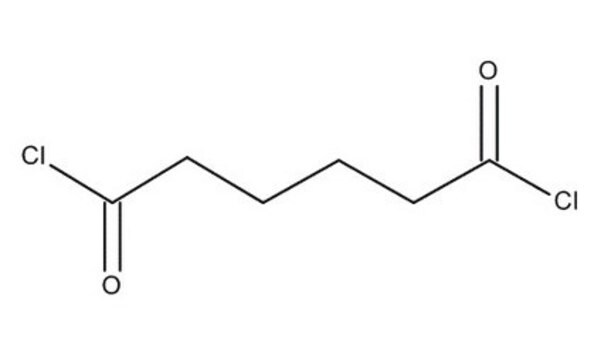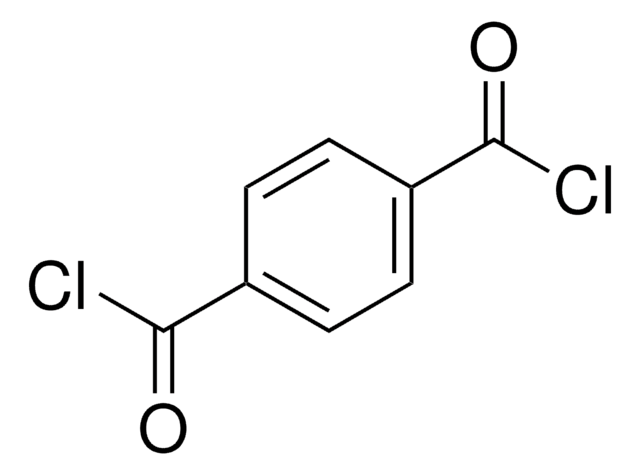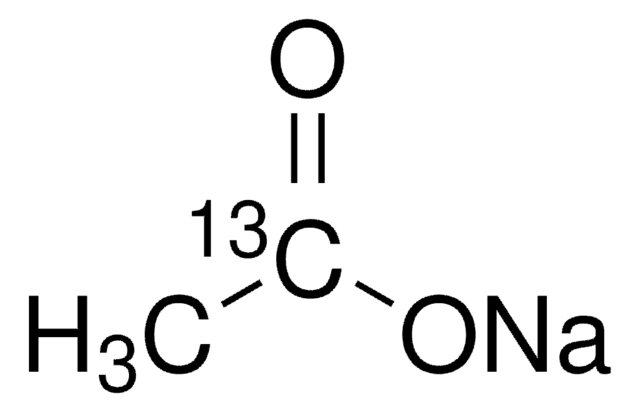Kluczowe dokumenty
165212
Adipoyl chloride
98%
Synonim(y):
Adipyl chloride
About This Item
Polecane produkty
Poziom jakości
Próba
98%
Formularz
liquid
współczynnik refrakcji
n20/D 1.471 (lit.)
bp
105-107 °C/2 mmHg (lit.)
gęstość
1.259 g/mL at 25 °C (lit.)
ciąg SMILES
ClC(=O)CCCCC(Cl)=O
InChI
1S/C6H8Cl2O2/c7-5(9)3-1-2-4-6(8)10/h1-4H2
Klucz InChI
PWAXUOGZOSVGBO-UHFFFAOYSA-N
Szukasz podobnych produktów? Odwiedź Przewodnik dotyczący porównywania produktów
Powiązane kategorie
Opis ogólny
Zastosowanie
- A coupling agent in the synthesis of PEG-PLA-PEG triblock copolymers, enabling the formation of unique polymer structures with potential applications in drug delivery systems, tissue engineering, and controlled release systems.
- A cross-linking agent in the synthesis of biodegradable aromatic-aliphatic poly(ester-amides) from monolignol-based ester dimers. These polymers possess favorable characteristics like exceptional mechanical strength, biodegradability, and thermal stability, making them suitable for a range of applications including, controlled drug delivery systems, and environmentally-friendly packaging materials.
- Used in the preparation of biphenyl end-capped liquid crystals.
Inne uwagi
Hasło ostrzegawcze
Danger
Zwroty wskazujące rodzaj zagrożenia
Zwroty wskazujące środki ostrożności
Klasyfikacja zagrożeń
Skin Corr. 1B
Kod klasy składowania
8A - Combustible corrosive hazardous materials
Klasa zagrożenia wodnego (WGK)
WGK 3
Temperatura zapłonu (°F)
233.6 °F - closed cup
Temperatura zapłonu (°C)
112 °C - closed cup
Środki ochrony indywidualnej
Faceshields, Gloves, Goggles, type ABEK (EN14387) respirator filter
Wybierz jedną z najnowszych wersji:
Masz już ten produkt?
Dokumenty związane z niedawno zakupionymi produktami zostały zamieszczone w Bibliotece dokumentów.
Klienci oglądali również te produkty
Produkty
Osadzanie warstw atomowych spełnia różne potrzeby, w tym miniaturyzację urządzeń półprzewodnikowych i powlekanie nanocząstek.
Molecular Layer Deposition of Organic and Hybrid Organic-Inorganic Polymers
Global Trade Item Number
| SKU | GTIN |
|---|---|
| 76153-5G | |
| 76153-1G | 4061826654354 |
| 165212-25G | 4061838748607 |
| 165212-100G | 4061838748591 |
| 165212-100ML | |
| 165212-25ML | |
| 165212-5G | 4061838748614 |
| 165212-5KG |
Nasz zespół naukowców ma doświadczenie we wszystkich obszarach badań, w tym w naukach przyrodniczych, materiałoznawstwie, syntezie chemicznej, chromatografii, analityce i wielu innych dziedzinach.
Skontaktuj się z zespołem ds. pomocy technicznej








